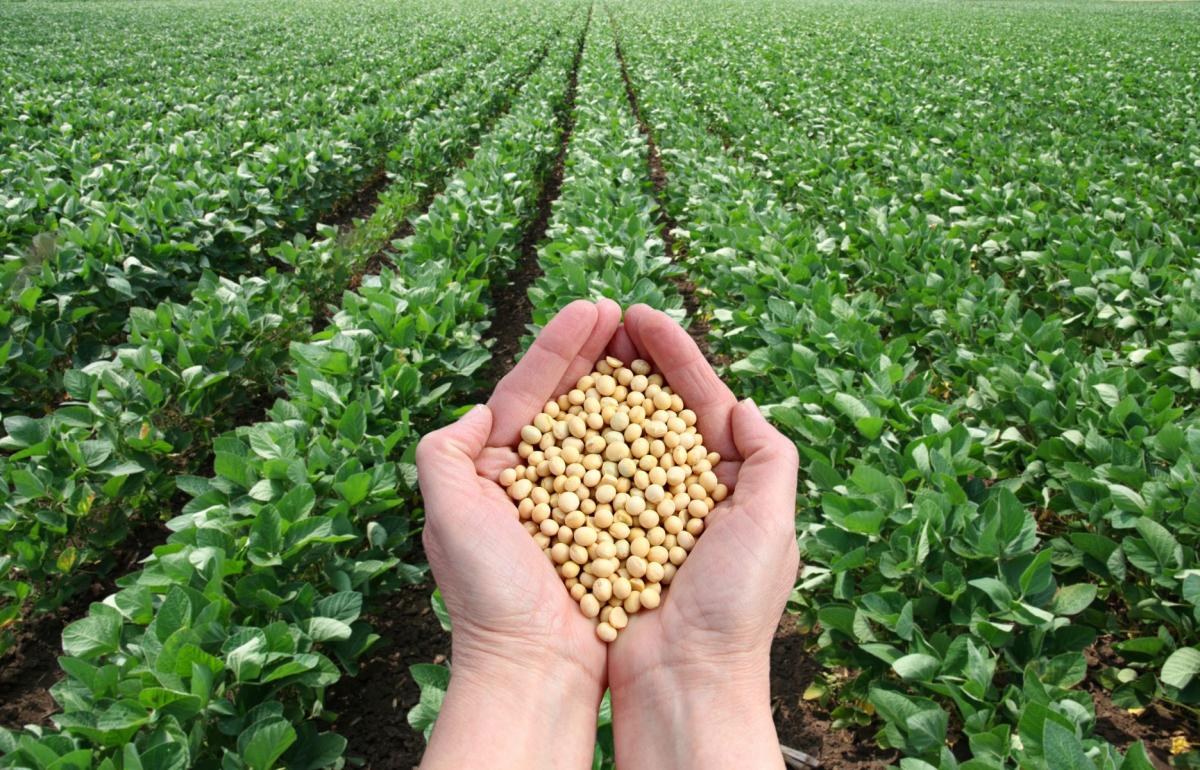Insects: Japanese Beetle and Stink Bug
Japanese Beetle
The Japanese beetle (Popillia japonica Newman) is a beetle about 1⁄2 inch long, metallic green with bronze-colored wing covers. Tufts of white hair are visible around its abdomen, just below the wing covers (Figure 1 and 2). The adult emerges from the ground in mid‐summer and usually can be found on plants from late June through September. Eggs are laid in the soil and hatch during July and August. The larvae feeds on live or decaying plant material in the ground until frost.
Japanese beetles have been known to feed on over 250 different species of plants. Favorite plants include roses, grapes, corn silks, soybean foliage and over‐ripe and decaying fruit. Japanese beetles feed on soybean leaves by stripping away the tissue between the larger leaf veins, thus giving the leaf a skeletonized appearance (Figure 3). Feeding occurs to a greater degree on the upper portion of the soybean canopy.
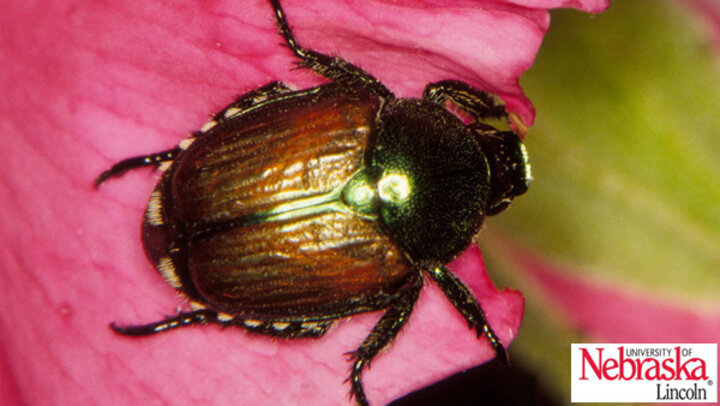
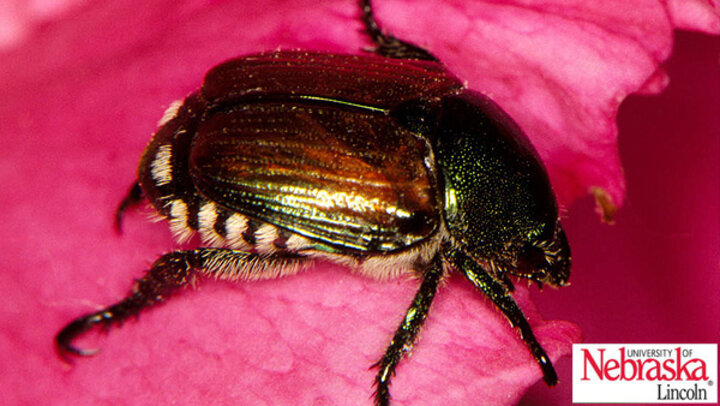
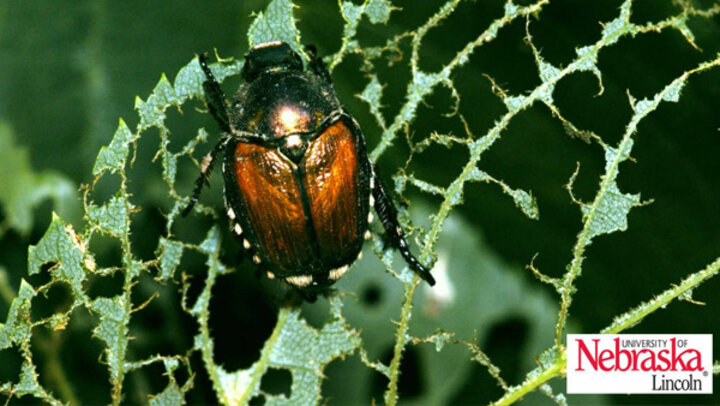
Japanese Beetle Management
Scouting
Take 20 sweeps with a sweep net in each of five field areas. Record the number of beetles found in each area. Distribution is typically not uniform; thus, determine the percentage defoliation level (Figure 4) for individual plants in each sampling area of the field and estimate the average percentage defoliation level for the field as a whole.
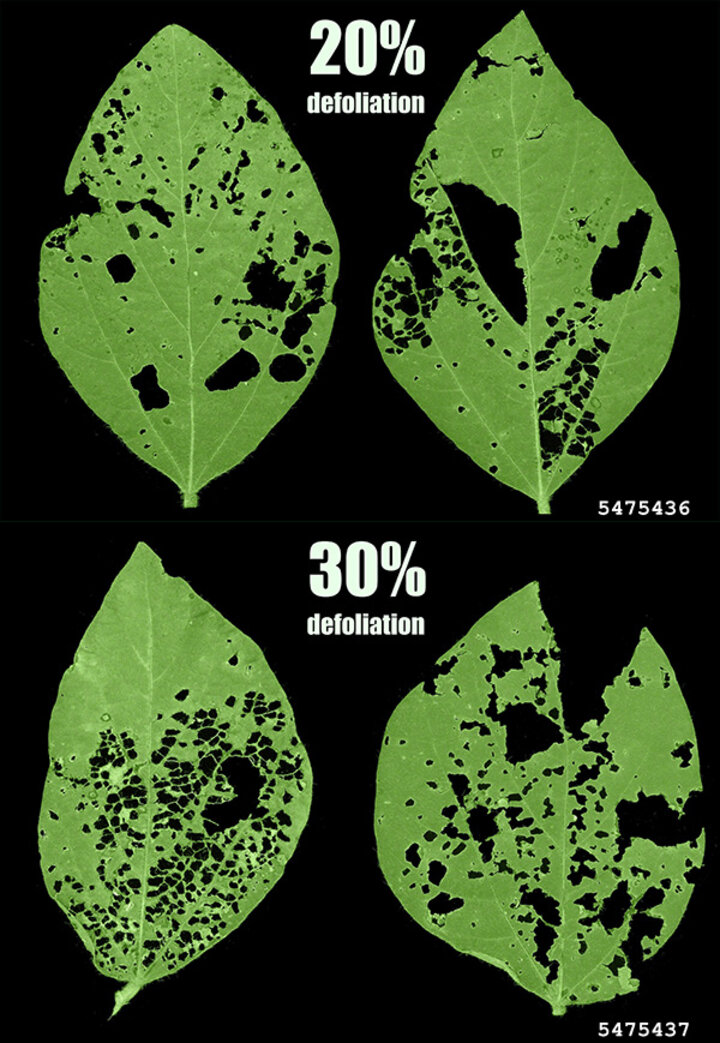
Insecticides
Insecticide applications can be effective in managing Japanese beetle populations. Using the appropriate economic threshold at the different soybean growth stages is critical (Figure 5).
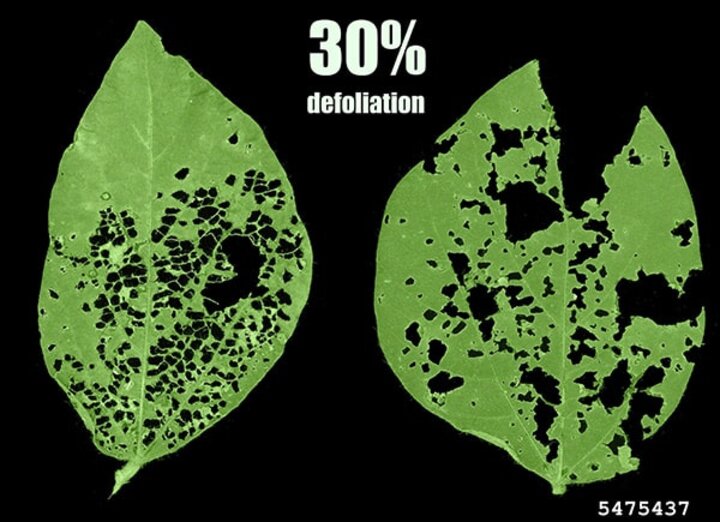
Stink Bug
Adult stink bugs are shield‐shaped insects that can be present in soybeans. There are multiple species of stink bugs, some of which are beneficial. Of these species, there are two that can cause significant damage to soybean — the brown stink bug (Euschistus spp.) and the green stink bug (Acrosternum hilare).
Green Stink Bugs
Adults are bright green and measure ½ to ¾ inch long. The major body regions of the green stink bug are bordered by a narrow, orange‐yellow line (Figure 6).
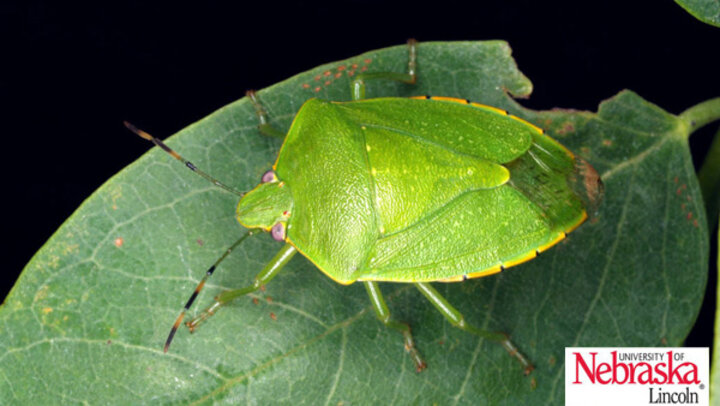
Eggs are barrel‐shaped, yellow to green in color but later turn pink to gray (Figure 7), and measure 1/20 inch in size.
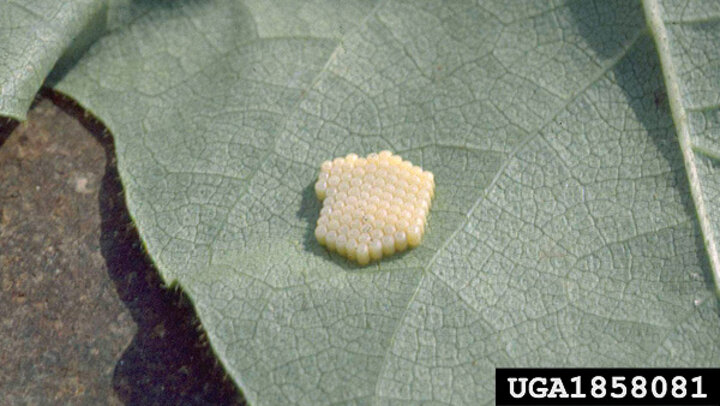
Nymphs are smaller versions of the adult but are predominantly black when small but as they mature their color becomes green with orange and black markings (Figure 8).
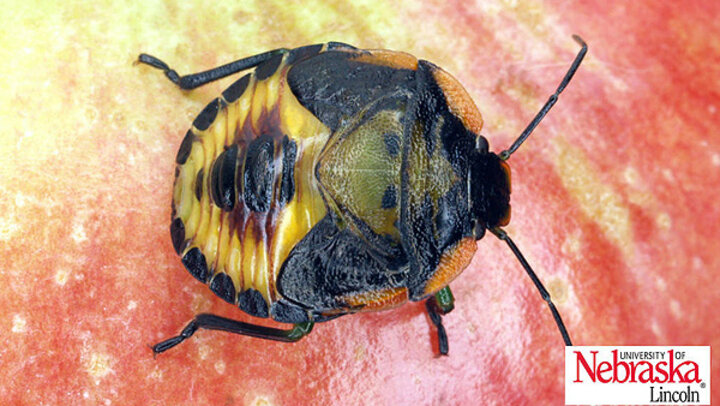
Brown Stink Bugs
Adults are dull brownish‐yellow in color and about ½ inch long (Figure 9).
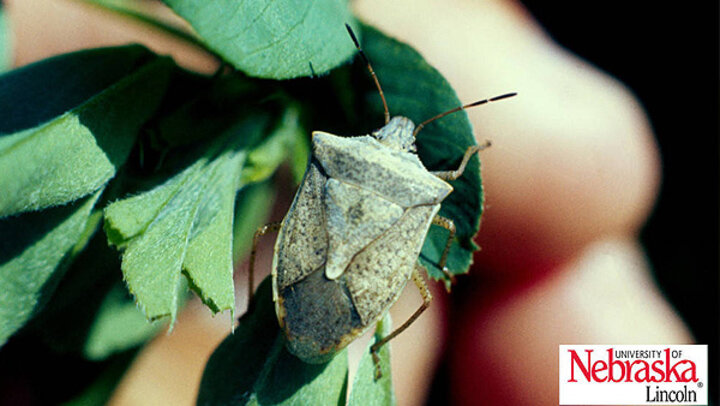
Eggs are white, kettle‐shaped and slightly smaller than those of the green stink bug (Figure 10).
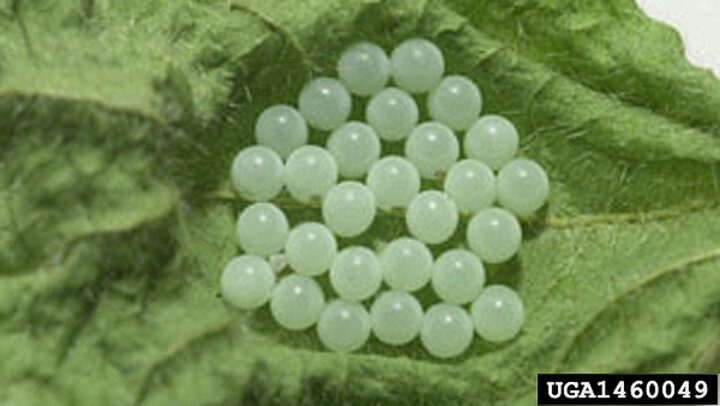
Nymphs are light green in color (Figure 12).
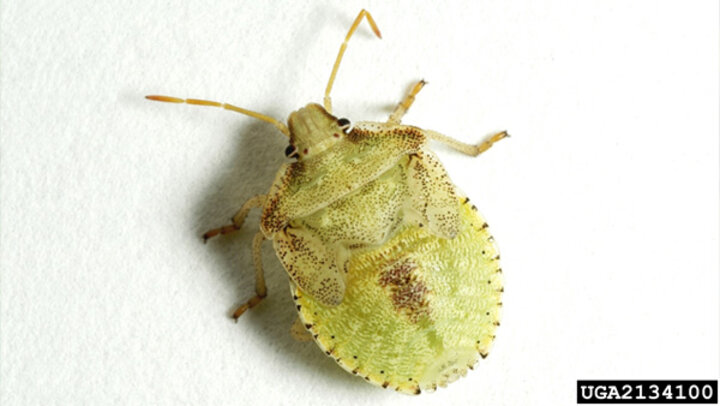
Stink bugs injure plants by puncturing tissues with their piercing and sucking mouthparts and then extracting plant fluids. Although many parts of the plant can be fed on by stink bugs, they prefer to feed on young tender pods and developing seeds.
When feeding occurs during seed formation, seeds will become shriveled, deformed, undersized and even be aborted. Feeding on more developed seeds will result in minor shriveling and discoloration. Besides the reduction in yield, stink bug damaged seed will result in lower market value and may even prevent sale of seed for seed producers or food grade soybeans.
Stink Bug Management
Scouting
Once stink bugs are found in a field and after the pods have begun to form, take 20 sweeps with a sweep net in each of five field areas. Determine the average number of bugs per sweep.
Insecticides
There are several insecticides available that are effective against stink bugs. For commercial soybeans, the economic threshold is 40 stink bugs per 100 sweeps while the pods are still green. For seed soybeans, the economic threshold is 20 stink bugs per 100 sweeps while the pods are still green.

Nebraska Soybean Board graciously provided the funding for the Soybean Management Guide.
Course authored by:
Amy Timmerman, extension educator; Aaron Nygren, extension educator; Brandy VanDeWalle, extension educator; Loren Giesler, Plant Pathologist Department head; Ron Seymour, extension educator; Keith Glewen, former extension educator; Charles Shapiro, emeritus extension soil scientist; Amit Jhala, extension weed specialist; Don Treptow, former graduate student
